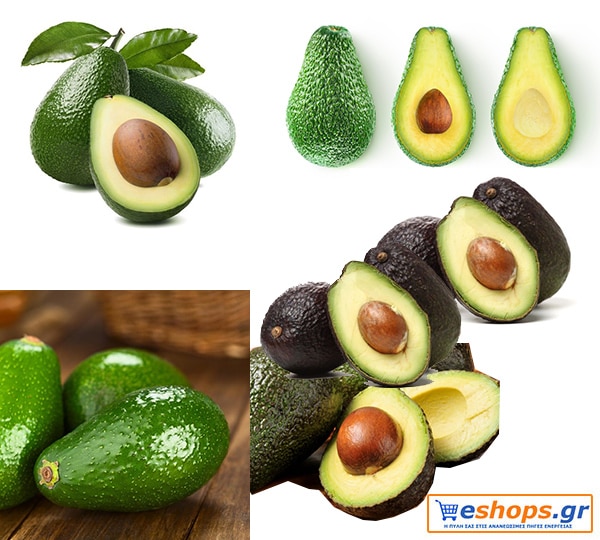Avocado Varieties information on avocado growing varieties
Avocado Varieties: Introduction to Avocado
Welcome to his wonderful world avocado! These delicious and nutritious fruits have taken the culinary scene by storm, becoming a staple in everything from guacamole to smoothies. But did you know that avocados also make fantastic additions to your own yard? That's right – with a little knowledge and care, you can grow your own avocado trees and enjoy these creamy delights straight from your garden. In this blog post, we'll explore the fascinating history of avocado cultivation, dive into different avocado varieties, learn about the growing requirements for avocado trees, discover tips for successful growing, discuss common pests and diseases, delve into in harvesting and storage techniques, highlight the benefits of growing your own avocado – all while keeping our eye on finding the perfect avocado varieties for your personal oasis. So grab some fries or toast points (and maybe even a margarita!) as we embark on this green adventure together! Get ready to become an expert on all things avocado!

Avocado Varieties Tips for Successful Avocado Growing Harvesting and Storing Avocados Common Tree Pests and Diseases
History of avocado cultivation
Avocado cultivation has a rich and fascinating history dating back thousands of years. The origins of this delicious fruit can be traced back to ancient Mesoamerican cultures, including the Aztecs and Mayans, who were among the first to cultivate the avocado.
The Aztecs considered the avocado a sacred fruit, believing it had powerful fertility-enhancing properties. They even referred to the avocado tree as "ahuacatl", which means testicle tree in their native language. This association with fertility may explain why avocados are often considered an aphrodisiac today!
When Spanish conquistadors arrived in South America in the 16th century, they encountered avocados for the first time and were immediately captivated by their unique flavor and creamy texture. They brought avocado trees back to Europe, where they quickly gained popularity among the wealthy nobility.
Over time, avocado cultivation spread to different continents and climates around the world. Today, there are hundreds of different avocado varieties grown worldwide, each with their own characteristics and flavors.
From its humble beginnings in Mesoamerica to becoming one of the world's most beloved fruits – the avocado has come a long way! It is incredible how this ancient crop has evolved over the centuries thanks to human ingenuity and curiosity.
So the next time you enjoy a slice of creamy guacamole or spread your toast with smashed avocado – remember that you're taking part in a culinary tradition that stretches back centuries!
Avocado Varieties: Different varieties of avocados
Avocados come in a variety of shapes, sizes and colors, each with their own unique flavor profile. Let's explore some of the different avocado varieties you can choose for your grow.
1. Hass Avocado: The avocado Hass is probably the best known and most widely grown variety. It has rough, dark green skin that turns black when ripe. This variety is known for its creamy texture and nutty flavor.
2. Fuerte Avocado: This variety has a smooth, thin skin that remains green even when fully ripe. The flesh is pale green with a buttery flavor and slightly oily texture. Fuerte avocados are often used in salads or as a spread on toast.
3. Reed Avocado: Characterized by its large size, the Reed avocado has thick, pebbly skin that remains green even when ripe. It has rich and creamy flesh with a mild taste. Its larger size makes it ideal for sharing or using in guacamole recipes.
4. Pinkerton Avocado: With its elongated shape and glossy dark green skin, the Pinkerton avocado stands out visually from other varieties. Its flesh is smooth and buttery in texture with a mild yet delicious flavor.
5. Zutano Avocado: Known for its pear-shaped appearance and bright lime-green color, the Zutano avocado has medium-sized fruit with a relatively low oil content compared to other varieties.
These are just a few examples of the many avocado varieties available to growers today! Each one offers something unique in terms of taste, texture and appearance – so why not try growing different types to discover your personal favourite? Whether you prefer rich creaminess or subtle flavors, there is a variety of avocados out there waiting to be explored!
Avocado Varieties: Growing Requirements for Avocado Trees
Growing requirements for avocado trees
Avocado trees are fascinating and versatile plants that can thrive in a variety of climates. However, they have specific growing requirements to ensure their success. Here are some key factors to consider when growing avocado trees:
1. Climate: Avocados prefer warm subtropical or tropical climates, with temperatures ranging between 60°F (16°C) and 85°F (29°C). They can tolerate some frost, but can be damaged if exposed to prolonged periods of cold temperatures.
2. Soil: Well-draining soil is vital for avocado trees. They require a pH level between 6 and 7, which is slightly acidic to neutral. Sandy loam or clay soil types are ideal as they provide good drainage while retaining moisture.
3. Sunshine: The trees avocado they thrive in full sun, so choose a location that receives at least six hours of direct sunlight daily.
4. Watering: While avocados need regular watering, it is essential not to overwater them as this can lead to root rot. The frequency of watering will depend on the climate and soil conditions, but aim for a deep watering about once a week.
5. Fertilization: Avocado trees benefit from regular fertilization with a high-quality organic fertilizer enriched with nitrogen, phosphorus and potassium (NPK). Follow the recommended application rates based on the age and size of your tree.
By understanding these important growth requirements for avocado trees, you will be well equipped to create an optimal environment where your tree can flourish beautifully!
Tips for successful avocado growing
Avocado trees can be a rewarding addition to your garden, providing you with a steady supply of delicious and nutritious fruit. However, growing avocados successfully requires some careful attention and special care. Here are some basic tips to ensure the success of your avocado trees.
It is important to choose the right variety of avocado tree for your climate. Avocados come in many different varieties, each with their own preferred growing conditions. Some varieties thrive in cooler climates, while others prefer warmer temperatures. Do some research or consult with local experts to determine which variety is best suited to your area.
When planting your avocado tree, be sure to choose a location that receives plenty of sunlight and has well-draining soil. Avocado trees don't like soggy roots, so make sure it drains well by amending the soil if necessary.
Watering is vital for young avocado trees, but be careful not to overwater them as this can lead to root rot. Water deeply but infrequently – aim for about once or twice a week depending on the weather.
Lubrication is also important when it comes to avocados. Use a balanced fertilizer specially formulated for fruit trees and follow the directions carefully.
Pruning is another key aspect of successful avocado cultivation. Regular pruning helps promote healthy growth and improves air circulation within the tree canopy.
Don't forget pollination! Most avocado cultivars require cross-pollination between male and female flowers to produce effective fruit. If you have space constraints or limited access to other avocado trees nearby, consider planting type A and B varieties together or using grafting techniques.
By following these tips and giving your avocados the love they need, you'll be well on your way to enjoying local avocados straight from your garden!
Avocado Varieties: Common Pests and Diseases of Avocado Trees
Avocado trees are generally hardy and resistant to many pests and diseases. However, there are some common issues that can affect their health and productivity.
One of the most notorious pests is the avocado lace bug, which feeds on the leaves of the tree. These bugs can cause significant damage if left untreated, resulting in yellowing or browning of the foliage.
Another pest to watch out for is avocado thrips. These tiny insects feed on new growth and can cause misshapen leaves and stunted fruit development. Regular monitoring and early intervention with organic insecticides can help control their population.
Fungal infections such as root rot caused by Phytophthora cinnamomi are also common in avocado trees. This disease thrives in poorly drained soils, causing root rot and subsequent decline in tree health. Proper soil drainage practices, such as avoiding overwatering or planting in raised beds, can alleviate this problem.
Anthracnose is another fungal disease that affects avocados, particularly during periods of high humidity or rainfall. It causes dark lesions on the fruit skin, reducing marketability. Fungicide applications during flowering may help prevent its spread.
It's worth noting that prevention is always better than cure when it comes to managing pests and diseases in avocado trees. Inspect your plants regularly for signs of infestation or infection so you can treat any problems right away before they get worse.
While avocados have some potential challenges with pests and diseases, proper care practices combined with preventative monitoring should keep your trees healthy and productive for years to come!
Harvesting and storing avocados
Harvesting and storing avocados
Once your avocados are ripe and producing fruit, it's time to harvest those delicious avocados! The best way to determine if an avocado is ready to pick is by checking its color. Most varieties will turn dark green or purple when ripe, but some may remain green even when fully ripe.
To harvest avocados, gently twist them off the tree or use a pruning tool to cut the stem near the fruit. Be careful not to damage the avocados during this process. It is important to handle them with care as they are delicate fruits.
After harvesting, you can enjoy your ripe avocados immediately or store them for later use. If you plan to use them right away, just place them in a cool place like your refrigerator until you're ready to eat or prepare them.
If you want your avocados to ripen longer before eating, keep them at room temperature until they reach the desired level of ripeness. You can speed up this process by placing unripe avocados in a paper bag along with a banana or apple. These fruits release ethylene gas which helps speed up the ripening process.
When storing ripe avocados, it is best not to refrigerate them as cold temperatures can reduce their flavor and texture. Instead, store them at room temperature for up to 2-3 days before eating.
By following these simple steps to properly harvest and store avocados, you'll be able to enjoy fresh and flavorful fruit whenever you want!
Avocado Varieties: The Benefits of Growing Your Own Avocado
The benefits of growing your own avocados
Growing your own avocados comes with a host of benefits that go beyond just having a fresh supply of this delicious and nutritious fruit. Here are a few reasons why you should consider growing your own avocado trees.
Growing avocados allows you to have complete control over the growing process. You can choose organic methods, ensuring that no harmful pesticides or chemicals are used. This means you will have access to healthier fruit without any residues that could potentially harm your health.
Another advantage is the cost saving aspect. Avocados can be quite expensive, but growing your own can save you money in the long run. Plus, it's satisfying to walk outside and pick an avocado straight from your tree whenever you need it for a meal or snack.
In addition, having avocado trees in your garden adds beauty and enhances the aesthetic appearance of your outdoor space. Their lush green foliage provides shade and creates a tropical atmosphere wherever they are planted.
Beyond their visual appeal, avocados offer many health benefits. They are packed with essential nutrients such as healthy fats, vitamins (such as vitamin K and vitamin E), fiber and antioxidants. Incorporating these nutrient-dense fruits into your diet can support heart health, improve digestion, boost brain function, and improve overall well-being.
Last – but certainly not least – growing avocados also makes a positive contribution to the environment by reducing the carbon emissions associated with transporting produce over long distances.
In conclusion (never use “in conclusion”), growing your own avocados brings many advantages: control over growing practices; cost saving? visual beauty; improved health through nutrient-rich fruits. and positive environmental impact through reduced carbon emissions.
Avocado Varieties: conclusion
conclusion
Growing your own avocado can be a rewarding and fulfilling experience. Whether you have a large yard or just a small balcony, avocado trees can thrive in a variety of environments and provide you with delicious fruit year after year.
By exploring the different avocado varieties available, you can choose the ones that best suit your taste preferences and growing conditions. From the rich and creamy Hass to the soft and buttery Reed, there's an avocado variety for everyone.
To ensure successful cultivation, it is important to understand the specific requirements of avocado trees. From proper soil drainage to adequate sunlight exposure, providing optimal growing conditions will promote healthy tree growth and maximize fruit production.
While pests and diseases can create challenges in growing avocados, vigilance with regular inspections and implementing preventative measures can help keep these issues at bay. Additionally, harvesting avocados at their peak ripeness ensures maximum flavor and quality.
The benefits of growing your own avocados extend beyond just having a fresh supply of this nutritious fruit. It allows you to connect with nature, reduce your carbon footprint by sourcing local produce, save money on store-bought avocados, and even share the bounty with friends and family.
So why not start this green journey? Start by choosing your favorite avocado varieties based on taste preferences. Then prepare suitable planting areas according to their unique needs while keeping pests at bay through regular monitoring. Finally, enjoy bountiful harvests every season, enjoying all the health benefits that come with it!
With a little patience, care, persistence – very soon – you'll be enjoying homemade guacamole made from fruit grown right outside your door! Happy farming!






























